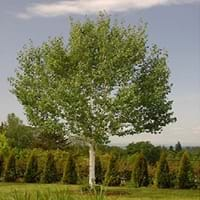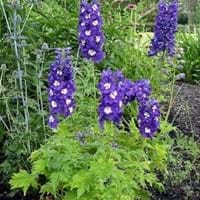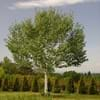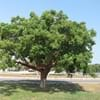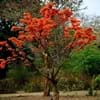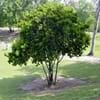Life Span
Perennial
Perennial
Type
Tree
Flowering Plants, Ornamental Plants, Shrubs
Origin
India, Nepal, China
Africa
Types
Not Available
Not Available
Number of Varieties
Not Available
Habitat
Mountains
gardens, meadows
USDA Hardiness Zone
5-7
Not Available
Sunset Zone
3a, 3b, 4, 5, 6, 7, 8, 9, 10, 11, 14, 15, 16, 17
Not Available
Habit
Pyramidal
Upright/Erect
Minimum Width
Not Available
Flower Color
Tan, Brown
Blue, Indigo, Lavender, Light Purple
Flower Color Modifier
Bicolor
Bicolor
Fruit Color
Not Available
Non Fruiting Plant
Leaf Color in Spring
Yellow green
Green
Leaf Color in Summer
Dark Green
Light Green
Leaf Color in Fall
Yellow
Green, Yellow green
Leaf Color in Winter
Not Available
Green, Light Yellow, Tan
Leaf Shape
Cordiform
Palmate and toothed
Plant Season
Spring, Summer, Fall, Winter
Spring, Summer, Fall, Winter
Sunlight
Full Sun, Partial Sun
Full Sun, Partial Sun
Type of Soil
Loam, Sand
Clay, Loam, Sand
The pH of Soil
Acidic, Neutral
Acidic, Neutral, Alkaline
Soil Drainage
Average
Well drained
Bloom Time
Early Spring
Not Available
Tolerances
Not Available
Heat And Humidity
Where to Plant?
Ground
Ground, Pot
How to Plant?
Grafting, Stem Cutting
Seedlings, Stem Cutting
Plant Maintenance
Medium
Medium
Watering Requirements
Requires watering in the growing season
It cannot sustain wet-feet, Keep ground moist, Requires regular watering, Water more in summer
In Summer
Average Water
Lots of watering
In Spring
Moderate
Moderate
In Winter
Average Water
Average Water
Soil pH
Acidic, Neutral
Acidic, Neutral, Alkaline
Soil Type
Loam, Sand
Clay, Loam, Sand
Soil Drainage Capacity
Average
Well drained
Sun Exposure
Full Sun, Partial Sun
Full Sun, Partial Sun
Pruning
Remove damaged leaves, Remove dead branches, Remove dead leaves
Cut away fading foliage, Do not prune during shooting season, Remove damaged leaves, Remove deadheads
Fertilizers
Fertilize in early spring, Fertilize in late fall, slow-release fertilizers
High-phosphorous fertilizers used, Organic Flower Fertilizer
Pests and Diseases
Honey fungus, Leaves with brown tip, Phytophthora Root Rot, Powdery mildew, Verticillium Wilt
Bacterial leaf spot, fungus, Mealybugs
Plant Tolerance
Dry Conditions, waterlogging, Wet Site
Heat And Humidity
Flowers
Insignificant
Yes
Flower Petal Number
Not Available
Single
Foliage Texture
Medium
Fine
Foliage Sheen
Matte
Matte
Attracts
Not Available
Butterflies
Allergy
Not Available
Severe allergen, Skin irritation, Skin rash, Throat itching, Vomiting
Aesthetic Uses
Not Used For Aesthetic Purpose
Beautification, Borders, Showy Purposes, Used for decorating walls, fences, gates, hedges, etc.
Beauty Benefits
Weightloss
No Beauty Benefits
Environmental Uses
Air purification
Air purification
Medicinal Uses
anti-cancer, anti-inflammatory, antimicrobial, Antioxidants, Antiseptic, Carminative
No Medicinal Use
Part of Plant Used
Bark, Leaves
Flowers
Other Uses
Used in construction, Wood is used in construction
Used in making blue ink
Used As Indoor Plant
No
No
Used As Outdoor Plant
Yes
Yes
Garden Design
Feature Plant, Shade Trees
Edging, Feature Plant
Botanical Name
BETULA utilis
Delphinium elatum
Common Name
Himalayan Birch
Alpine delphinium, Delphium, Candle larkspur, Siberian larkspur, Musk Larkspur,
In Hindi
हिमालय सन्टी
अल्पाइन Delphinium
In German
Himalaya-Birke
Alpine Delphinium
In French
bouleau de l'Himalaya
Alpine Delphinium
In Spanish
abedul del Himalaya
Alpine Delphinium
In Greek
Himalayan σημύδας
Alpine Δελφίνιο
In Portuguese
bétula Himalaia
Alpine Delphinium
In Polish
Himalayan brzoza
Alpine Delphinium
In Latin
Birch Himalayan
Alpine Delphinium
Phylum
Tracheophyta
Tracheophyta
Class
Magnoliopsida
Magnoliopsida
Order
Fagales
Ranunculales
Family
Betulaceae
Ranunculaceae
Clade
Angiosperms, Eudicots, Rosids
Angiosperms, Eudicots
Tribe
Not Available
Not Available
Subfamily
Not Available
Not Available
Number of Species
Not Available
Importance of Himalayan Birch and Alpine Delphinium
Want to have the most appropriate plant for your garden? You might want to know the importance of Himalayan Birch and Alpine Delphinium. Basically, these two plants vary in many aspects. Compare Himalayan Birch and Alpine Delphinium as they differ in many characteristics such as their life, care, benefits, facts, etc. Every gardener must at least have the slightest clue about the plants he wants to plant in his garden. Compare their benefits, which differ in many ways like facts and uses. The medicinal use of Himalayan Birch is anti-cancer, anti-inflammatory, antimicrobial, Antioxidants, Antiseptic and Carminative whereas of Alpine Delphinium is No Medicinal Use. Himalayan Birch has beauty benefits as follows: Weightloss while Alpine Delphinium has beauty benefits as follows: Weightloss.
Compare Facts of Himalayan Birch vs Alpine Delphinium
How to choose the best garden plant for your garden depending upon its facts? Here garden plant comparison will help you to solve this query. Compare the facts of Himalayan Birch vs Alpine Delphinium and know which one to choose. As garden plants have benefits and other uses, allergy is also a major drawback of plants for some people. Allergic reactions of Himalayan Birch are Not Available whereas of Alpine Delphinium have Severe allergen, Skin irritation, Skin rash, Throat itching and Vomiting respectively. Having a fruit bearing plant in your garden can be a plus point of your garden. Himalayan Birch has no showy fruits and Alpine Delphinium has no showy fruits. Also Himalayan Birch is not flowering and Alpine Delphinium is flowering. You can compare Himalayan Birch and Alpine Delphinium facts and facts of other plants too.
